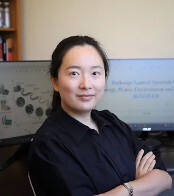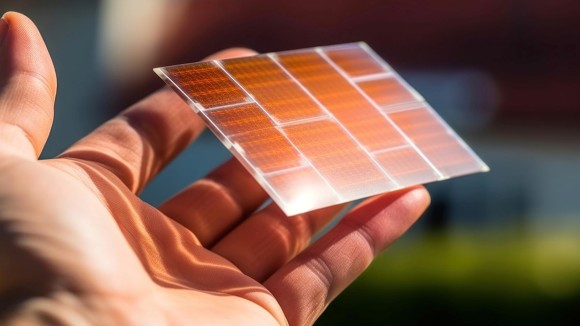Tian Li, PhD, Purdue University, United States Dr. Tian Li is currently an Assistant Professor in the School of Mechanical Engineering at Purdue University. She obtained her bachelor’s degree from Huazhong University of Science and Technology in China. She carried out her PhD under Prof. Mario Dagenais in the area of microelectronics and non-linear optics in the Department of Electrical and Computer Engineering at University of Maryland. She then joined Prof. Liangbing Hu's group in the Department of Materials Science and Engineering at the same University for Postdoc study. Tian was recognized as a Packard Fellow, Violet B. Haas Fellow and is the recipient of many awards including Forbes 30 under 30, ASME Haythornthwaite Foundation Research Award, R&D 100 Finalist, Sony Research Innovation Award, MRS postdoc award, among others. Her research work has been covered in many medias including Science podcast, Nature index, New York Times and others.
Dr. Tian Li is currently an Assistant Professor in the School of Mechanical Engineering at Purdue University. She obtained her bachelor’s degree from Huazhong University of Science and Technology in China. She carried out her PhD under Prof. Mario Dagenais in the area of microelectronics and non-linear optics in the Department of Electrical and Computer Engineering at University of Maryland. She then joined Prof. Liangbing Hu's group in the Department of Materials Science and Engineering at the same University for Postdoc study. Tian was recognized as a Packard Fellow, Violet B. Haas Fellow and is the recipient of many awards including Forbes 30 under 30, ASME Haythornthwaite Foundation Research Award, R&D 100 Finalist, Sony Research Innovation Award, MRS postdoc award, among others. Her research work has been covered in many medias including Science podcast, Nature index, New York Times and others.
Luigi Occhipinti, PhD, University of Cambridge, UK Dr. Luigi Occhipinti joined the University of Cambridge in April 2014. He developed science and innovation for more than 20 years in emerging technology areas for the post-CMOS roadmap, smart systems heterogeneous integration, polymer and printed electronics, advanced bio-systems and molecular diagnostics, advanced signal processing and nonlinear computation, advanced mechanical, optical and chemical sensor technologies, with focus on miniaturization and advanced packaging technologies for smart devices and products. His current position is Director of Research in Graphene and Related Technologies and he serves as Deputy Director and Chief Operating Officer of the Cambridge Graphene Centre.
Dr. Luigi Occhipinti joined the University of Cambridge in April 2014. He developed science and innovation for more than 20 years in emerging technology areas for the post-CMOS roadmap, smart systems heterogeneous integration, polymer and printed electronics, advanced bio-systems and molecular diagnostics, advanced signal processing and nonlinear computation, advanced mechanical, optical and chemical sensor technologies, with focus on miniaturization and advanced packaging technologies for smart devices and products. His current position is Director of Research in Graphene and Related Technologies and he serves as Deputy Director and Chief Operating Officer of the Cambridge Graphene Centre.
Gregory Whiting, PhD, University of Colorado Boulder, United States Dr. Gregory Whiting joined the University of Colorado Boulder in 2017 and is an Associate Professor in the Department of Mechanical Engineering. He is also a fellow of the Materials Science and Engineering Program, co-director of the Design Center Colorado, affiliate faculty of the ATLAS Institute, and a member of the Multi-Functional Materials Interdisciplinary Research Team. His research is focused at the intersection of additive manufacturing, novel materials, and functional devices. Greg is primarily interested in using printing as a method to fabricate unconventional electronic components and systems that can be readily customized, mechanically flexible/conformable, large area, widely distributed, biocompatible, and/or controllably transient. These devices can find application in a wide range of areas including agriculture, off-planet manufacturing, robotics, medicine, environmental monitoring, and energy generation and storage.
Dr. Gregory Whiting joined the University of Colorado Boulder in 2017 and is an Associate Professor in the Department of Mechanical Engineering. He is also a fellow of the Materials Science and Engineering Program, co-director of the Design Center Colorado, affiliate faculty of the ATLAS Institute, and a member of the Multi-Functional Materials Interdisciplinary Research Team. His research is focused at the intersection of additive manufacturing, novel materials, and functional devices. Greg is primarily interested in using printing as a method to fabricate unconventional electronic components and systems that can be readily customized, mechanically flexible/conformable, large area, widely distributed, biocompatible, and/or controllably transient. These devices can find application in a wide range of areas including agriculture, off-planet manufacturing, robotics, medicine, environmental monitoring, and energy generation and storage.

